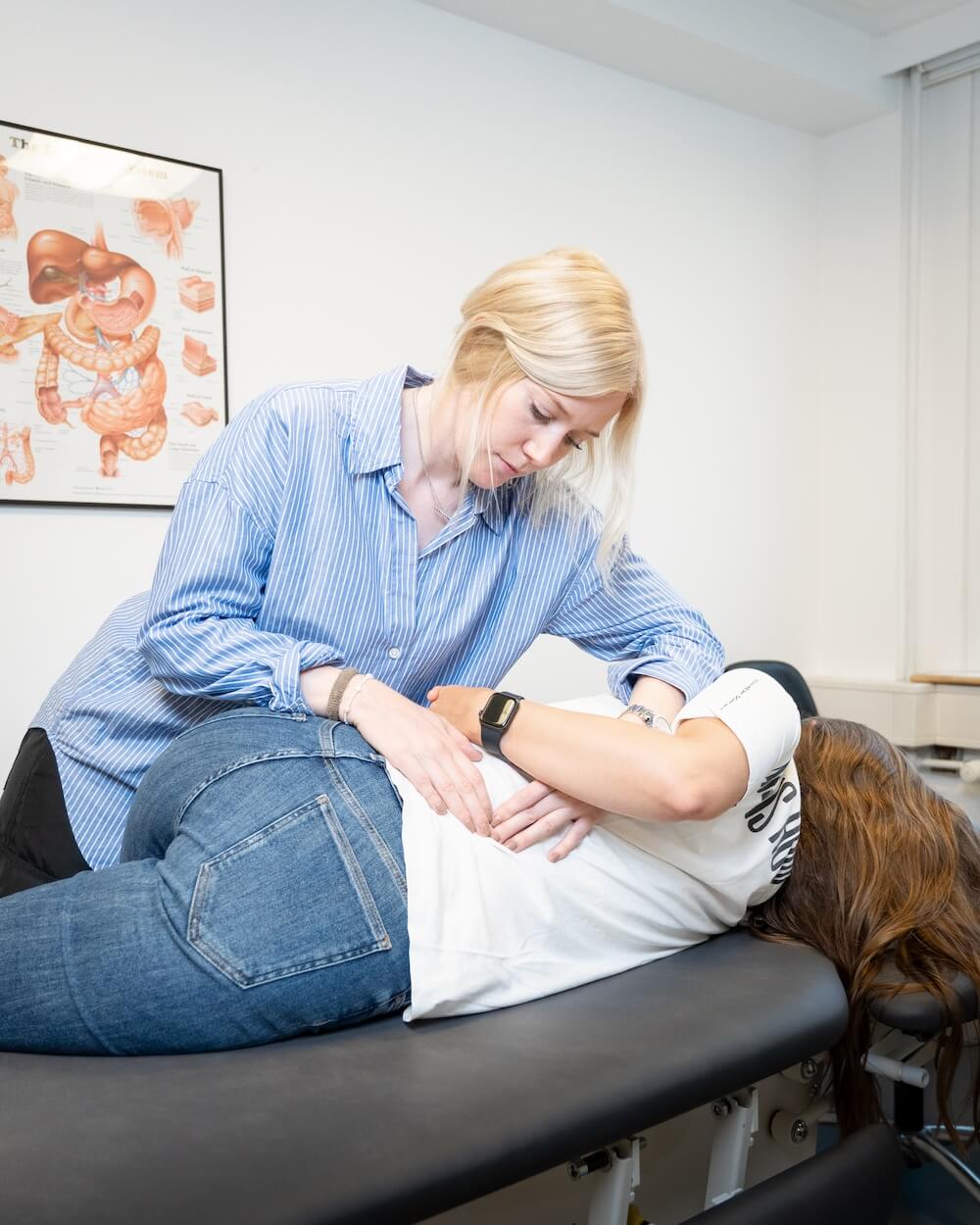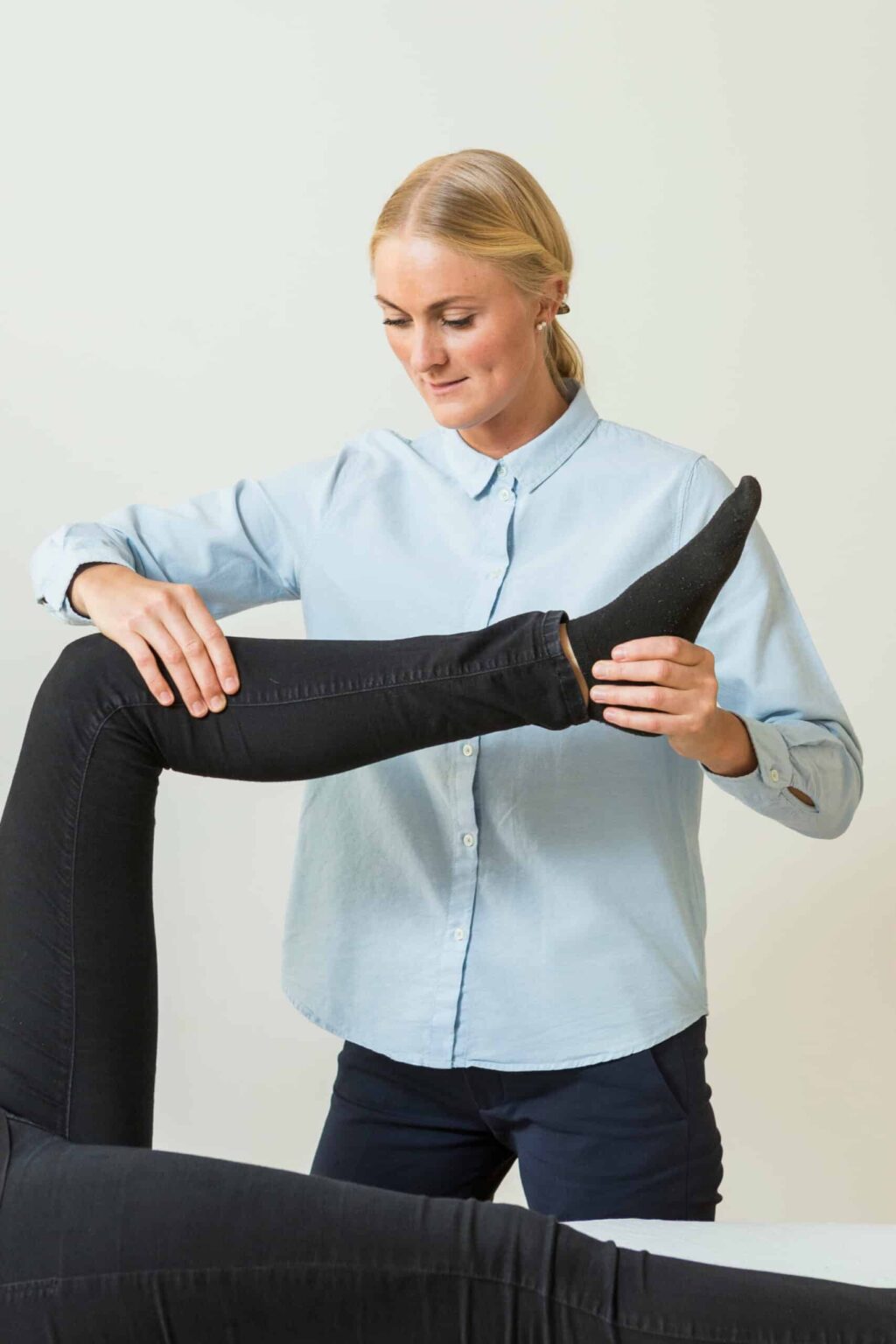We treat
Compartment syndrome
What is compartment syndrome and what can be done about it?
Compartment syndrome
Compartment syndrome, also called muscle compartment syndrome, is a painful and potentially serious condition. The condition is caused by increased pressure within a muscle compartment, which may be due to edema or bleeding. This results in blood vessels and nerves being compressed and the function of the tissue in question being reduced. Compartment syndrome can occur in all muscle compartments of the body, including the hand, forearm, upper arm, abdomen, thigh and calf, with the shin being the most common location. There are two types; acute and chronic, with different causes. The syndrome occurs in 1-9% of people with a lower leg fracture.
Jump to section [Vis]
What is a muscle compartment?
A muscle compartment is a group of muscles that are surrounded by the same fascia (connective tissue). Each muscle compartment is a functional unit that contains, in addition to muscles, blood vessels and nerves. An example is in our lower leg, where there are four muscle compartments; an anterior, a posterior, a medial and a lateral compartment. The fascia that surrounds each muscle compartment is tight and can expand to a small extent. This means that the pressure increases inside the muscle compartment if you overload the muscle tissue or injure the muscle compartment.

Causes of compartment syndrome?
Acute compartment syndrome
Acute compartment syndrome often occurs after an injury or trauma to the muscle compartment. This can be after a fracture, a hemorrhage, or external compression (squeezing or crushing injury), for example, having a cast that is too tight. It is a condition where the blood supply is inhibited due to increased pressure, and thus the function of tissues such as muscles and nerves in the muscle compartment deteriorates.
In the worst case, oxygen deprivation will occur in the muscle compartment and this can lead to permanent damage to nerves and muscles. Acute compartment syndrome is often a condition that requires rapid treatment within a few hours after ischemia has occurred, to avoid nerve and muscle function being destroyed, and thus risking permanent damage.
Chronic compartment syndrome
Chronic compartment syndrome often occurs after too intense and prolonged physical activity with the same repetitive movements, where the fascia around the muscle compartment cannot keep up with the increased muscle volume. This increases the pressure in the muscle compartment, thereby inhibiting the blood supply to the muscle and causing oxygen deficiency, which causes the cramp-like symptoms.
Chronic compartment syndrome often occurs in the lower legs of athletes who do a lot of running or endurance training, but can also occur in the forearms of motorcycle riders.
Symptoms of compartment syndrome?
The symptom picture is different for acute and chronic compartment syndrome.
Symptoms of acute compartment syndrome
- Often nonspecific
- Intense severe pain
- Impaired function
- Ischemic pain
- Tension
- Swelling, tenderness and stiff muscles
Symptoms of chronic compartment syndrome
- Sore and tense muscles, especially after activity
- Cramp-like condition that increases with exertion
- Pain from sustained strain
- Pain relieved by rest
- Often located at the front of the shin

Treatment of compartment syndrome
There are several ways to treat compartment syndrome, the purpose of which is to relieve symptoms and prevent permanent damage. Damage can be reduced ability to, for example, move fingers or toes in a certain direction or atrophy of muscles, which can cause problems such as Equinus deformity, claw toes, loss of ability to walk on tiptoes, and inability to extend fingers or toes.
There is a good prognosis with proper treatment.
Operation
Acute compartment syndrome is often treated with surgery shortly after the injury. The surgery reduces pressure in the muscle compartment by splitting the fascia, which can reduce pressure and increase circulation. A physiotherapist can then help with rehabilitation.
If conservative treatment of chronic compartment syndrome is not effective enough, surgery may be necessary.
Conservative treatment
First of all, conservative treatment of chronic compartment syndrome will be attempted. The main aim is to adjust to a proper activity level, where a physiotherapist can help organize the intensity and variations of the training. Painkillers are available for a period of time. In addition, adapted footwear and manual therapy can help.
Osteopathic treatment compartment syndrome
The osteopathic examination is holistic and will look at all the body’s systems to find the cause. It is important that there is a balance between the body’s systems for the body’s ability to heal to be optimal.
The purpose of osteopathy is to create the right healing conditions and the body’s function by, among other things, loosening fascia, joints, softening tissue, mobilizing nerves and increasing circulation with manual treatment.
Additionally, focus on sleep, diet and exercise.
Compartment syndrome is best treated with a combination of osteopathic treatment and physiotherapy.

Good advice against compartment syndrome
Acute advice
Listen to your body. It is important to be aware that if you have had a fracture, bleeding or pinched injury, you should assess the intensity of the pain; if it is stronger than you would expect, you should react and contact a doctor.
Good advice for chronic compartment syndrome
- Reduce the training volume
- Avoid too rapid progression
- Find an alternative form of exercise
- Stretching the muscle
- Contact a healthcare professional if you experience muscle pain with every workout.




